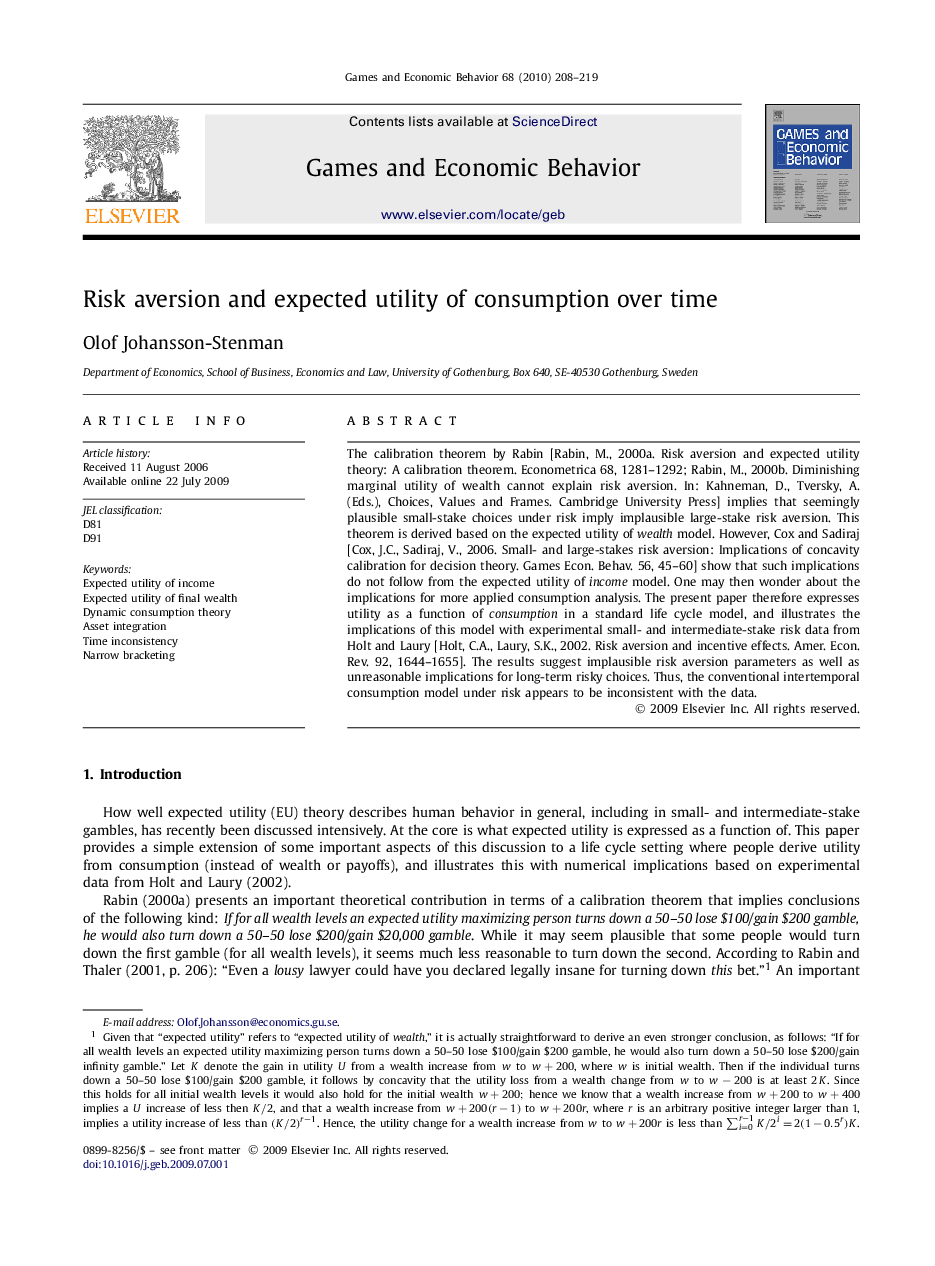| کد مقاله | کد نشریه | سال انتشار | مقاله انگلیسی | نسخه تمام متن |
|---|---|---|---|---|
| 5072452 | 1373505 | 2010 | 12 صفحه PDF | دانلود رایگان |
عنوان انگلیسی مقاله ISI
Risk aversion and expected utility of consumption over time
دانلود مقاله + سفارش ترجمه
دانلود مقاله ISI انگلیسی
رایگان برای ایرانیان
موضوعات مرتبط
علوم انسانی و اجتماعی
اقتصاد، اقتصادسنجی و امور مالی
اقتصاد و اقتصادسنجی
پیش نمایش صفحه اول مقاله

چکیده انگلیسی
The calibration theorem by Rabin [Rabin, M., 2000a. Risk aversion and expected utility theory: A calibration theorem. Econometrica 68, 1281-1292; Rabin, M., 2000b. Diminishing marginal utility of wealth cannot explain risk aversion. In: Kahneman, D., Tversky, A. (Eds.), Choices, Values and Frames. Cambridge University Press] implies that seemingly plausible small-stake choices under risk imply implausible large-stake risk aversion. This theorem is derived based on the expected utility of wealth model. However, Cox and Sadiraj [Cox, J.C., Sadiraj, V., 2006. Small- and large-stakes risk aversion: Implications of concavity calibration for decision theory. Games Econ. Behav. 56, 45-60] show that such implications do not follow from the expected utility of income model. One may then wonder about the implications for more applied consumption analysis. The present paper therefore expresses utility as a function of consumption in a standard life cycle model, and illustrates the implications of this model with experimental small- and intermediate-stake risk data from Holt and Laury [Holt, C.A., Laury, S.K., 2002. Risk aversion and incentive effects. Amer. Econ. Rev. 92, 1644-1655]. The results suggest implausible risk aversion parameters as well as unreasonable implications for long-term risky choices. Thus, the conventional intertemporal consumption model under risk appears to be inconsistent with the data.
ناشر
Database: Elsevier - ScienceDirect (ساینس دایرکت)
Journal: Games and Economic Behavior - Volume 68, Issue 1, January 2010, Pages 208-219
Journal: Games and Economic Behavior - Volume 68, Issue 1, January 2010, Pages 208-219
نویسندگان
Olof Johansson-Stenman,